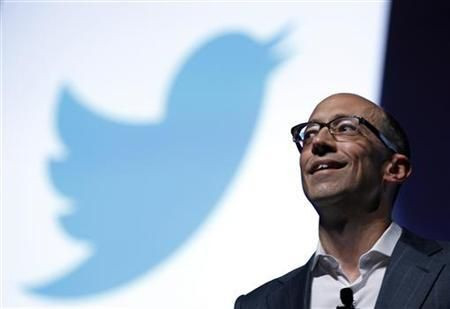Twitter: One Year After IPO, Microblogging Site Struggles With Growth, User Engagement

Twitter has been a publicly traded company for a year and a day, but it's failing to live up to the heady expectations generated by its IPO. Wall Street has taken notice, and the critiques are piling up against CEO Dick Costolo.
The company's problem effectively boils down to an inability to attract and maintain casual users. Most people who "use" Twitter are logged-out visitors to the site, reading content that the smaller, more devoted userbase has generated. The social network can claim 284 million active users per month, compared to 232 a year ago, but Costolo noted during the most recent quarter's earnings call that there's a circle of passive lurkers immediately outside of the core that's two to three times the size of its active base.
If Twitter can grab their attention enough for them to register accounts, it's well on its way to becoming the billion-user company it wants to become and investors expect.
"Profiles are a little different now, they've made a couple acquisitions, they’ve expanded their ad product, and they've changed the way tweets work for advertising, so some changes have been made," said Brian Blau, research director at Gartner. "But there's still a question around user engagement. There's a large amount of non-engagement happening, and a smaller percentage of the user base engaging."
So what steps has the company taken to combat this? In the first quarter of last year, Costolo came out with a short list of improvements to make -- to change the onboarding process, to make tweets easier to consume. Some of this has happened; the recent release of Digits means that people can sign up for Twitter with nothing more than a phone number. And there are rumors of Twitter's direct messaging feature being broken out into a standalone business.
Twitter has come under fire for having an abuse problem, particularly against women, and this week partnered with Women, Action, & The Media to combat it. "They have to be good corporate citizens," said Blau. The company opened a new office in Hong Kong that will see it doing what it can to earn ad dollars from another large market, and it's looking to make the most of its ad network around the world. But again, this does little to solve the fundamental problem of getting users to interact with its product more often and more meaningfully.
But there's a bit of a Catch-22 in play. Twitter stands the chance of upsetting that committed core user base if it changes things too drastically, too soon. "Back at the IPO, I had the impression they’d make significant changes by this point," said Blau. "Over time, Twitter hasn't been a fast mover. It was probably to their advantage in the beginning and it's done them well up until recently. They've got to protect that main group, at least in the short term."
Consider Facebook, which has exhibited massive changes in the same timeframe, even seeing user revolt and backlash as a result. "Facebook is taking a lot of risk with product, much more than Twitter," said Blau. "We haven't seen enough changes to convince users to engage with Twitter more. The big question is what should they be doing? I think they don’t know. We don’t have a lot of evidence that they know where they’re going."
© Copyright IBTimes 2025. All rights reserved.






















